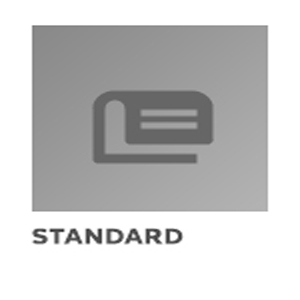No products
 View larger
View larger
ASME BPVC 2023 Code Cases Boilers and Pressure Vessels
New product
Approval Date: December 2, 1990
Code Cases will remain available for use until annulled by the applicable Standards Committee.
Case 1968-1
Use of Acoustic Emission Examination in Lieu of
Radiography
Section VIII, Division 1
Inquiry: Under what conditions and limitations may an
acoustic emission AE examination conducted during the
hydrostatic test be used in lieu of radiography RT, when
radiography in accordance with UW-51 is required by
UW-11 of Section VIII, Division 1, for the circumferential
closure weld in pressure vessels?
Reply: It is the opinion of the Committee that the circumferential
closure weld in pressure vessels may be examined
using the acoustic emission AE method in lieu of
radiography RT provided that all of the following requirements
are met.
a The materials of construction shall be P-No. 1 Group
1 or Group 2 and the weld thickness shall not exceed
21/2 in.
b The vessel shall not exceed 2 ft inside diameter, 2 ft
inside length, or 7 ft3 capacity.
c The acoustic emission examination shall be performed
in accordance with a written procedure that is
certified by the manufacturer to be in accordance with
Section V, Article 12, Acoustic Emission Examination of
Metallic Vessels During Pressure Testing. The written
procedure shall be demonstrated to the satisfaction of
the Inspector.
d The manufacturer shall certify that personnel performing
and evaluating AE examinations have been qualified
and certified in accordance with their employers
written practice. SNT-TC-1A-1984 shall be used as a
guideline for employers to establish a written practice
for qualifying and certifying personnel. The qualification
records of certified personnel shall be maintained by their
employer.
e The AE examination shall be conducted throughout
the hydrostatic test that is required by UG-99. Two pressurization
cycles from atmospheric pressure to the test
pressure required by UG-99 shall be used.
f Evaluation and acceptance criteria shall be as
follows.
1 During the first pressurization cycle, any rapid increase
in AE events or any rapid increase in AE count rate
shall require a pressure hold. If either of these conditions
continues during the pressure hold, the pressure shall be
immediately reduced to atmospheric pressure and the
cause determined.
2 During the second pressurization cycle, the requirements
More info
of 1 above shall apply and, in addition, the
following AE indications shall be unacceptable:
-a any AE event during any pressure hold;
-b any single AE event that produces more than
500 counts, or that produces a signal attribute equivalent
to 500 counts;
-c six or more AE events detected by any single
sensor;
-d three or more AE events from any circular
area whose diameter is equal to the weld thickness or
1 in., whichever is greater;
-e two or more AE events from any circular area
having a diameter equal to the weld thickness or 1 in.,
whichever is greater that emitted multiple AE events
during the first pressurization.
g Welds that produce questionable acoustic emission
response signals i.e., AE signals that cannot be interpreted
by the AE examiner shall be evaluated by radiography
in accordance with UW-51. If the construction of
the pressure vessel does not permit interpretable radiographs
to be taken, ultrasonic examination may be substituted
for radiography in accordance with UW-11a7.
Final acceptance or rejection of such welds shall be
based on the radiographic or ultrasonic results, as
applicable.
h The AE sensors shall be positioned so that the entire
pressure vessel is monitored by the AE system and all AE
response signals shall be recorded and used in the evaluation.
The same AE acceptance standards shall be applied
to the rest of the vessel that are applied to the circumferential
closure weld.
i The AE test results and records shall be retained in
accordance with the Section VIII requirements for radiographic
film.
j This Case number shall be shown on the Data Report
Form.
CASE
1968-1
The Committees function is to establish rules of safety, relating only to pressure integrity, governing the construction of boilers, pressure vessels, transport
tanks and nuclear components, and inservice inspection for pressure integrity of nuclear components and transport tanks, and to interpret these rules when
questions arise regarding their intent. This Code does not address other safety issues relating to the construction of boilers, pressure vessels, transport tanks
and nuclear components, and the inservice inspection of nuclear components and transport tanks. The user of the Code should refer to other pertinent codes,
standards, laws, regulations or other relevant documents.
ASME BPVC.CC.BPV-2023
1 1968-1
